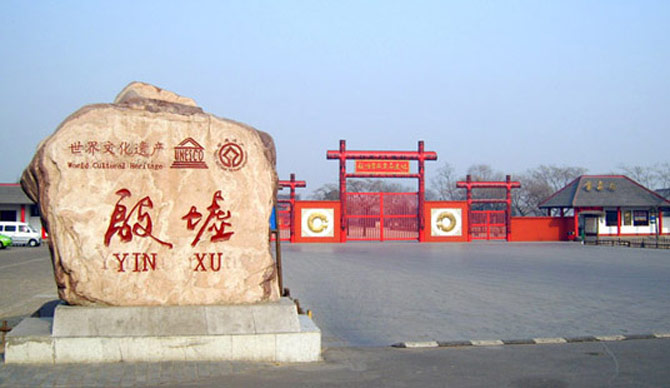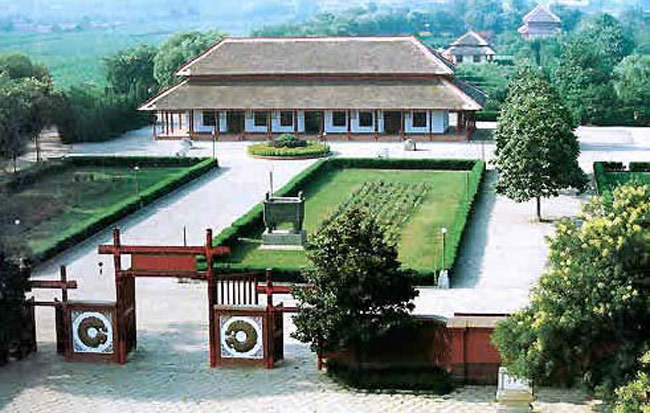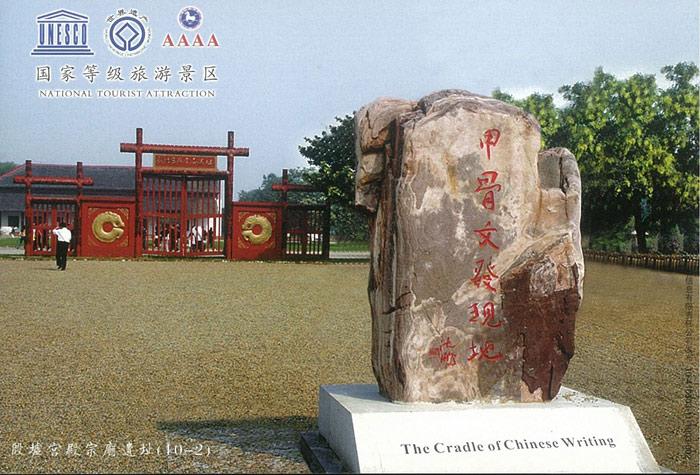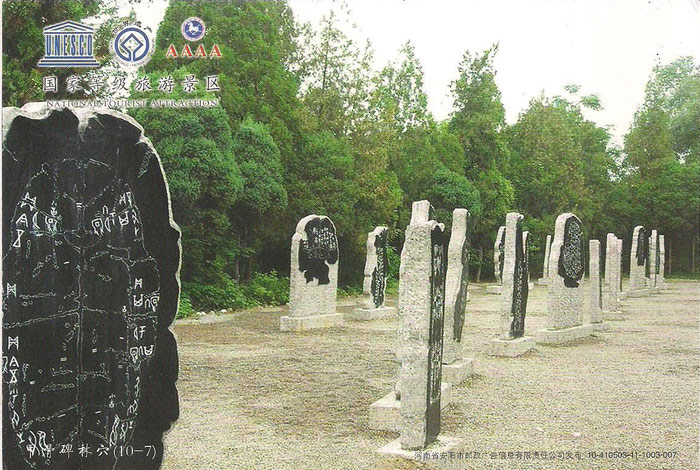Secrets - World Cultural Heritage in China
Unesco's Scientific, Educational and Cultural Organization has recognized China's Grace Relic as a World Cultural Heritage in 2006.

Yin Xu means " ruin of An's house ", a relic of the capital of the Shang Dynasty (China), China. An Khuy is located in the center of Ha Nam province, about 500km from Beijing, on the site of today's An Duong city. According to some documents, An Khuc is the last capital of the Thuong Dynasty (1600 to 1046 BC). This area was once the cultural and spiritual center of the late Thuong Dynasty.

An Khuu relic site is located on the two rivers west of the city. This monument is divided into two areas: the Royal Palace and the tomb area. The total area of the area is 414 hectares, the buffer zone is 720 hectares. During the 255 years that existed under the rule of 12 kings, Grace was truly prosperous and gained much value in history, culture and arts.


The panorama of the Hidden Ruins area is divided into two separate parts, the Royal Palace area and the tomb area.
The mausoleum area of Thuong Dynasty is no longer available but in the tomb area, archaeologists have found many ancient tombs, including graves with a depth of more than 18 meters. Most of the tombs built here are of mandarins, the only royal tomb found to be the grave of Queen Su Hao , wife of Vu Dinh. This is also the oldest tomb found in this relic. Father Hao is the wife of the 12th King of the Thuong Dynasty. The grave was discovered in a rather intact situation. The tomb has 06 dog skeletons, at least 16 human skeletons beside the bone of the Hao. These skeletons are believed to be close servants who were buried to serve Vu Dinh's wife. There are also 440 bronze artifacts, nearly 600 pieces of jade, stone and bone carved with about 7000 shell coins - the money used for that period. The accessories found at the grave showed the progressive level of the handicraft industry of Thuong from several thousand years ago.



An Khuu relic is also famous because archaeologists have found bones and tortoise shells with inscriptions written on them . Science calls the inscriptions written on the bones and the tortoise shells are the Armor Armor . The core is the origin of Chinese characters and Chinese characters. Here, archaeologists have unearthed more than 160,000 armor pieces, 1000 green bronze artifacts. From these artifacts, scholars have summed up about 4,500 orders of which about 3,000 can be read and understood, 1,500 words are most semantically agreed by scholars.
 The pieces of armor that were unearthed in An Khuy have great historical value and are good for human development thousands of years ago.This is the writing system, the oldest language found so far.
The pieces of armor that were unearthed in An Khuy have great historical value and are good for human development thousands of years ago.This is the writing system, the oldest language found so far.
The content is summarized from the fragments of the armor that talk about the political, economic, cultural and social situation of Thuong hospital in the process of formation and development.
The site was discovered in 1928 when experts and archaeologists of the Chinese Institute of History and Philosophy conducted 15 large-scale archaeological excavations in An Khuy. 15 excavations were made during nearly 10 years from 1928 to 1937. The results of the excavation were gradually discovered when traces of the palace's temples and shrines were revealed. In 1995, An Duong City decided to establish An Khuc Relic Management Department to preserve and promote the value of this cultural heritage.


A number of artifacts and other artifacts were excavated at the Hidden Ruins archaeological site displayed in the museum
The Sanctuary is recognized by Unesco under the criteria (ii), (iii), (iv), (vi).
Criterion (ii): Grace is the capital of the Shang dynasty, which represents an important exchange of influence in Chinese Bronze Age culture.
Criterion (iii): The artifacts found in An Khuc are a clear evidence for the cultural tradition of Thuong. At the same time, it is a testament to the scientific and technical achievements of the people of that period.
Criterion (iv): The palaces and tombs in An Khuc are also outstanding examples of Chinese architectural design with standard palace architecture and royal tombs.
Criterion (vi): The words written on the bones and shells are the oldest writing and language system. This is evidence for the superiority of Chinese people.
- Di Hoa Vien - World Cultural Heritage in China
- Thien Dan - World Cultural Heritage in China
- Van Cuong stone cave
- Citadel and tomb Cao Cu Ly - Cultural heritage of China
- Cultural landscape of Bam - World Cultural Heritage in Iran
- Longmen Stone Cave - World Cultural Heritage in China
- The territory of Roy Mata - World Cultural Heritage at Vanuat
- Tomb of Qin Shihuang - China
- Zvartnots site - World cultural heritage in Armenia
- Potola Palace of China
- Lijiang town
- Hoang De and Hoanh Thon villages in Anhui
 Suzhou classic bonsai garden - China
Suzhou classic bonsai garden - China Chau Nguyen Dynasty
Chau Nguyen Dynasty Thai Son Mountain - World Wonder
Thai Son Mountain - World Wonder Ancient villages of Shirakawa-go and Gokayama
Ancient villages of Shirakawa-go and Gokayama